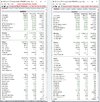- Joined
- 28 December 2013
- Posts
- 6,392
- Reactions
- 24,319
I'm personally either too old or too lazy to implement something similar
@barney, when we fail to listen, we forgo the right to learn.
Every poster has something to contribute
Barney, I've read most of your posts & at times you tend to sell yourself a bit short.
I'm posting information that worked for me
@ducati916, @peter2, @qldfrog, @Newt, @tech/a, @Warr87, @Joe90, @frugal.rock, @othmana86, @bigdog, @lindsayf, @debtfree, @CNHTractor, @Saqeeb, @martyjames, @Cam019, @rnr, @Rsthree, @MovingAverage @Lone Wolf, & @Beaches all have their own "particular style & trading experience" posting in a manner that they feel will be helpful to others. (sorry if I've missed a contributor to this thread, I've gone from memory)
Sharing is caring
Without realising it, we are all in this game together just playing different positions on the same team. (even if at times it doesn't feel that way)
Skate.


